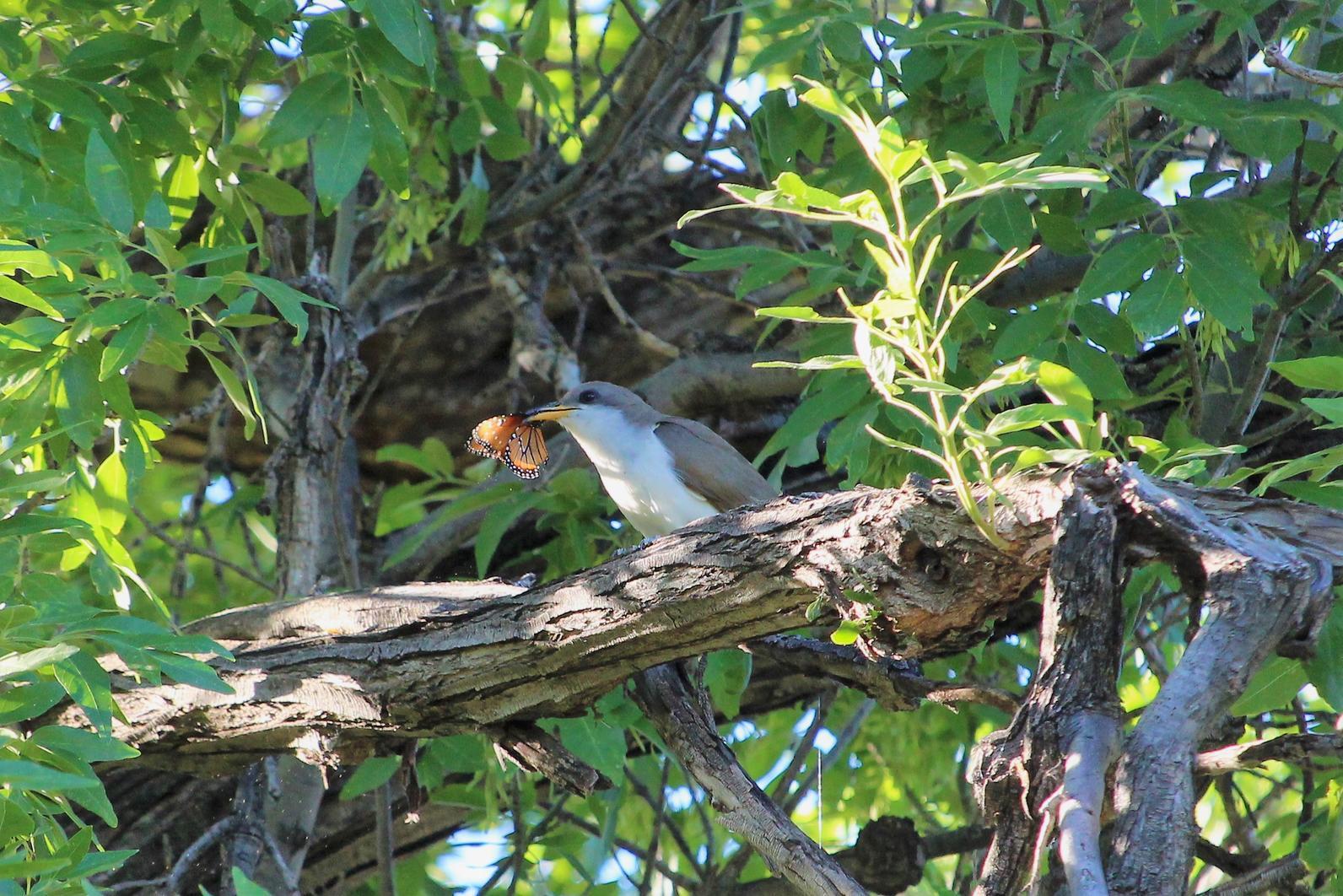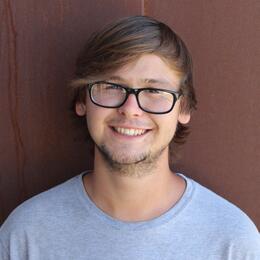It's early morning when we arrive at our first call point— barely 5:30 am. We’re groggy from our night in the field, and the coffee hasn’t kicked in yet.
At the end of June, our River Pathways interns have been shown the ropes and are getting into the swing of surveying for the Western Yellow-billed Cuckoo. Following protocol, I team up with Max Ayala, while Livia Hamel and Iona Stevens pair with Audubon biologists Steve Prager and Cathy Wise respectively, and we start our separate treks down the Agua Fria River to look for the threatened bird.
We begin the morning ritual: fill out the datasheet, set up call back equipment, check the temperature. Then we wait.
Soon our efforts aren’t in vain. A gentle coo starts upstream of us. It drifts closer, still cooing from its hidden canopy domain. We catch just a brief glimpse of it as it flies downstream and into the dense canopy of a willow.
“That’s just how it goes sometimes,” I say to Max. “You rarely get looks much better than that.”
We continue downstream, still hyped up from our last detection. A few call points later, we’re standing next to the stream admiring a bright red male Summer Tanager atop a tree. Soon he dives into the tree and chases out our cuckoo. We’re both excited as we search for the cuckoo's new landing place, and we don’t see much more than a tail for the first minute or so. Another cuckoo calls downstream, and our bird calls back from a walnut tree. Then, out of the branches, it flies into the open.
“What’s that in its beak?” Max asks.
“It looks like a Queen Butterfly,” I respond.

I begin snapping photos of the bird— you rarely get views that good. It sits and eats right in front of us and looks at us curiously. Maybe it doesn’t know it's in the open... or maybe it’s just as curious about us as we are about it. Either way, it was a moment we will treasure for a long time to come.
After a few minutes, it flies back into the thick riparian forest and we continue with our surveys. We get two more cuckoos by the end of the day, for a total of five birds.
Although a little less than typical, this is just another day in the life of Audubon Arizona's field crew and our River Pathways summer interns. Each year, we bring on new young people to experience moments like these. Although waking up before sunrise isn't my favorite thing, I'm glad I can spend my summer working to protect Arizona's vulnerable bird species with our next generation of conservation leaders.
Summer 2019 River Pathways interns
Max Ayala
19 years old
From South Phoenix, Arizona
Max attended South Pointe High School, where Audubon naturalists delivered a presentation in his classroom. He applied for the internship because he has been outside for much of his childhood, and wants to make a career out of his love for the outdoors. He'd like to develop a deeper knowledge of the wildlife and wild places in Arizona, especially in his own neighborhood.
He is very interested in doing more work at Audubon, and would like to attend the Bureau of Land Management's Field School as well. He plans to attend South Mountain Community College to study Forestry and History. He also would like us to mention that he is pretty handsome, in his own opinion.
Livia Hamel
18 years old
From Phoenix, Arizona
Livia loves birds, wants to see more of the state, gain a more in-depth appreciation for the outdoors, and help conserve the places that she loves. Livia initially became interested in the position during a River Pathways field trip at Black Canyon Heritage Park. She plans to either study Fine Arts or Education, and feels that a background in wildlife work will be beneficial in either career pathway.
She plans to either attend the Paradise Valley Community College, or the Bureau of Land Management's Field School when she is finished here at Audubon.
Iona Stevens
19 years old
From Ganado, Arizona
Iona wants to know more about wildlife and surveying for birds, and also wants to be more comfortable outdoors as she didn’t camp much as a kid. Iona initially learned about the position through a career advisor at her school. She hopes to gain more wildlife knowledge and be more connected to nature by the end of the internship.
After the internship, Iona plans to go back to college at the Institute of American Indian Arts to study Fine Arts and Navajo Linguistics, and she also might apply for a job at the New Mexico Zoo.
---
River Pathways is supported by the APS Foundation, Bureau of Land Management, Salt River Pima-Maricopa Indian Community, and Thunderbirds Charities. We're grateful for our additional partnerships with the Arizona Game and Fish Department, Black Canyon Heritage Park, Phoenix Union High School District, US Forest Service, and others who help make the program possible.





